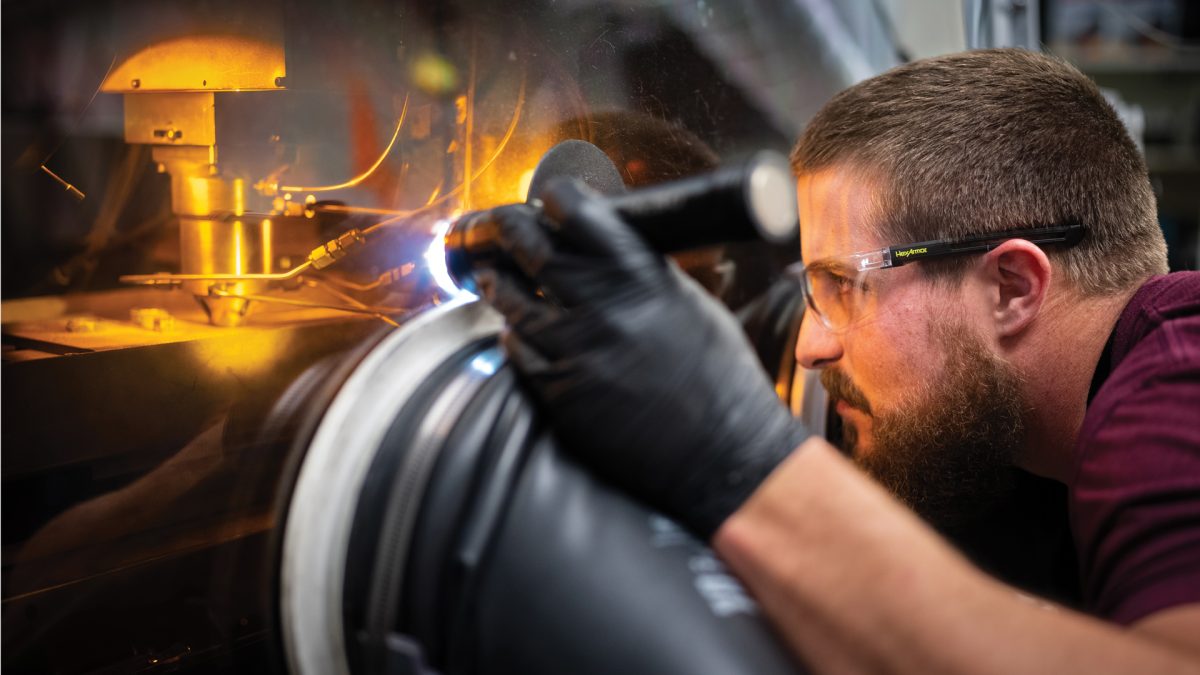As the world looks for ways to cut greenhouse gas emissions, researchers from Sandia National Laboratories have shown that a new 3D-printed superalloy could help power plants generate more electricity while producing less carbon.
Sandia scientists, collaborating with researchers at Ames National Laboratory, Iowa State University and Bruker Corp., used a 3D printer to create a high-performance metal alloy, or superalloy, with an unusual composition that makes it stronger and lighter than state-of-the-art materials currently used in gas turbine machinery. The findings could have broad impacts across the energy sector as well as the aerospace and automotive industries, and hints at a new class of similar alloys waiting to be discovered.
Sandia scientist Andrew Kustas stated that their research demonstrates the ability of the material to achieve high strength, low weight, and high-temperature resiliency, which were previously unattainable. He believes that the additive manufacturing approach played a crucial role in achieving these results.
Material withstands high heat, essential for power plant turbines
Electricity—whether from fossil fuel or nuclear power plants, relay on heat to turn turbines that generate electricity. Power plant efficiency is limited by how hot metal turbine parts can get. If turbines can operate at higher temperatures, “then more energy can be converted to electricity while reducing the amount of waste heat released to the environment,” said Sal Rodriguez, a Sandia nuclear engineer who did not participate in the research.

Sandia’s experiments showed that the new superalloy — 42% aluminum, 25% titanium, 13% niobium, 8% zirconium, 8% molybdenum and 4% tantalum — was stronger at 800 degrees Celsius (1,472 degrees Fahrenheit) than many other high-performance alloys, including those currently used in turbine parts, and still stronger when it was brought back down to room temperature.
Energy is not the only industry that could benefit from the findings. Aerospace researchers seek out lightweight materials that stay strong in high heat. Additionally, Ames Lab scientist Nic Argibay said Ames and Sandia are partnering with industry to explore how alloys like this could be used in the automotive industry.
Argibay stated that the electronic structure theory, led by Ames Lab, allowed them to comprehend the atomic roots of the beneficial characteristics of the alloys. They are currently working on enhancing this novel class of alloys to tackle obstacles related to manufacturing and scalability.

Discovery highlights changes in materials science
Additive manufacturing, also called 3D printing, is known as a versatile and energy-efficient manufacturing method. A common printing technique uses a high-power laser to flash-melt a material, usually a plastic or a metal. The printer then deposits that material in layers, building an object as the molten material rapidly cools and solidifies.
But this new research demonstrates how the technology also can be repurposed as a fast, efficient way to craft new materials. Sandia team members used a 3D printer to quickly melt together powdered metals and then immediately print a sample of it.
Sandia’s creation also represents a fundamental shift in alloy development because no single metal makes up more than half the material. By comparison, steel is about 98% iron combined with carbon, among other elements.
According to Kustas, the addition of carbon to iron had a significant impact on the world. While combining a few elements has resulted in useful engineering alloys, there is now a trend of incorporating four or more elements into a single material. This development makes it more intriguing and challenging from the perspectives of materials science and metallurgy.
Scalability, cost are challenges to overcome
Moving forward, the team is interested in exploring whether advanced computer modelling techniques could help researchers discover more members of what could be a new class of high-performance, additive manufacturing-forward superalloys.
Michael Chandross, a Sandia scientist who specializes in atomic-scale computer modeling, stated that the metal mixtures under discussion are highly intricate. He pointed out that the metals interact with each other on microscopic and atomic levels, and these interactions govern various properties of the metals such as their strength, malleability, and melting point. Chandross, who was not directly involved in the study, explained that their model is advantageous because it can compute these interactions and help predict the performance of new materials before they are fabricated. This helps to eliminate much of the guesswork involved in metallurgy.
Kustas said there are challenges ahead. For one, it could be difficult to produce the new superalloy in large volumes without microscopic cracks, which is a general challenge in additive manufacturing. He also said the materials that go into the alloy are expensive. So, the alloy might not be appropriate in consumer goods for which keeping cost down is a primary concern.
Source: Sandia National Laboratories
